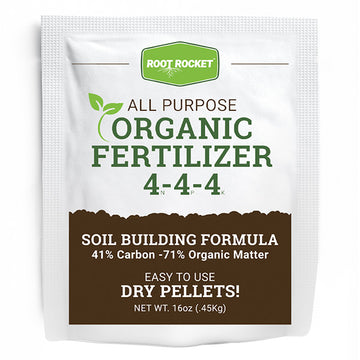
The mere sight of palm trees conjures up thoughts of warm weather, sunny days, and tropical beaches. And this immediately makes us relax and unwind! There are many palm trees to choose from whether you want to grow them indoors or out. They make great patio plants in warm and cool climates. Palm trees can also bring the tropics indoors in any home. Planting palm trees is a snap if you follow a few simple steps. Learn how to plant palm trees in a variety of ways, whether in a pot or in the ground.
How to Plant Palm Trees in the Ground
- Before planting your new palm tree, water it thoroughly.
- Dig a hole that is about twice the width of the root ball and the same depth.
- Place your palm tree in the hole ensuring that it is level and even on all sides.
- Do not plant your palm tree too deeply. The top of the root ball should be slightly higher than the existing soil line.
- Backfill with the native soil or a 50/50% mixture of the native soil and an organic planting mix. Pack the soil in with your hands to remove air pockets.
- Water thoroughly.
- Water every day for the first 3 to 5 days. Then water deeply about twice per week for 2 to 3 months while your palm tree’s roots are establishing.
Planting Palm Trees in Pots
- Pick out a pot you like that has good drainage and is a size or 2 larger than the existing container.
- Place organic planting mix in the bottom of the pot. Then place your palm in the pot, filling in the potting soil around it. Only put a thin layer of fresh soil on the top of the intact root ball.
- Water your palm tree well. Be sure the entire root ball is completely saturated. You may need to put the planter in a sink or take it outside so you can allow the water to flow from the drainage holes in order to ensure it is watered thoroughly.
- Water when then the soil begins to dry down about 2 inches. You can use your finger to test the soil moisture.
Best Outdoor Palm Trees
European Fan Palm
Chamaerops humilis
Growing Zones 8-11
Mature Size: 8 to 15 feet tall and 6 to 10 feet wide
This clumping palm is a beauty! It comes as a single or multi trunk and has gorgeous fan-like fronds. The European Fan Palm tree is extremely heat and drought tolerant.
Pindo Palm
Butia capitata
Growing Zones 8-11
Mature Size: 15 to 20 feet tall and 10 to 15 feet wide
The Pindo Palm has a classic palm tree look with long feathery fronds and textured trunk. These sun-loving, heat-loving, salt tolerant palms are great for coastal areas.
Windmill Palm
Trachycarpus fortunei
Growing Zones 7-11
The Windmill Palm is one of the most cold hardy palms. It is a traditional-looking palm tree that is perfect for adding a touch of the tropics around your pool. Check out our blog for more information on landscaping around a pool.
Best Indoor Palm Trees
Chinese Fan Palm
Livistona chinensis
Growing Zones 9-11
Mature Size: 8 feet tall and 5 feet wide, larger when planted in the ground
Also known as a fountain palm, this pretty palm tree is the perfect tropical addition to your indoor living space. This unique houseplant is low maintenance and extremely adaptable and hardy.
Majesty Palm
Ravenea rivularis
Growing Zones 9-11
Mature Size: 10 to 15 feet tall and 4 to 5 feet wide
The Majesty (or majestic) Palm tree is one of the best indoor tropical trees. This plant softens up your space while cleaning the air in your home.
Robellini Palm
Phoenix Roebelenii
Growing Zones 9-11
Mature Size: 6 to 10 feet tall and wide
This unique palm tree can be grown outside in subtropical climates or indoors in cooler climates.
Sago Palm
Cycas revoluta
Growing Zones 8-11
Mature Size: 6 to 10 feet tall and 5 to 6 feet wide
The slow-growing Sago Palm is easy to grow indoors or outdoors in the appropriate climate. This neat palm-like plant is pest, disease, and deer resistant. It is very easy to grow.
Now you know how to plant palm trees and about some different palm tree varieties for growing indoors and out. Whether you want to grow palm trees indoors or outdoors, they aren’t complicated plants. In fact once they are established they are low to no maintenance and easy to grow. Go plant a palm tree and grab a tropical drink! You’ll be transformed into your “island self” in no time. Happy planting!





